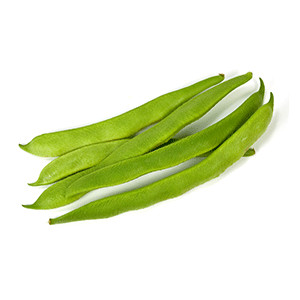Fortex

Variety
Fortex
Approved Data
created by steffen a. at 15.12.2023
Features
Color
carrot like
Location
Gewächshaus
Freiland
gut gedüngter Boden
Fruit shape
länglich
Growth habit
kletternd
hoch
Kletterpflanze
Resistenzen
robust
Geschmack
süß
Season Overview
Sowing
Harvest
J
F
M
A
M
J
J
A
S
O
N
D
Description
This stringless runner bean produces exceptionally long, medium-green pods that grow to over 27 cm. Fortex can also be harvested at 15-20 cm to produce particularly slender fillet beans. The delicate, sweet taste is delicious fresh or frozen. The seeds of the Fortex fillet bean variety produce vigorous climbing plants that require a trellis or stake for support. Freshly harvested, these beans are sweet, crunchy and have a succulent texture and flavor that will secure them a place in the garden every season.
Non hybrid
Not frost resistant
Growing tips
Direct sow from late spring to early summer. Try to sow during a warm, dry period. The soil must be warm - if it is not warm enough, the seeds may rot, especially our untreated seeds. Optimum soil temperature: 21-32°C (70-90°F). Plant the seeds 10 cm apart and 3.5 cm deep at the base of a support. The plants climb by twining around almost anything. Try rough stakes, wood, trellises or build a strong trellis 2-2.5 m high. Seeds germinate in 8-16 days depending on soil conditions. well-drained, warm soil in full sun is best. Use 1 cup of a balanced organic fertilizer per 3 m row. Too much nitrogen in the fertilizer or manure is often the cause of poor pod set and delayed maturity. If beans flower but do not form pods, the cause may be a zinc deficiency. Try spraying the plants with a seaweed-based fertilizer. Damp leaves on densely packed plants are susceptible to disease. Thin out the plants to improve air circulation and avoid touching the leaves while they are wet. As runner beans are always climbing, there are always beans at different stages of maturity. It is important to pick regularly so that the seeds do not fully mature and the plant no longer produces new pods. When the pods are full of seeds, the plant stops flowering. The smaller the bean, the more tender it is.
Details
Light requirement
Sunny
Water requirement
Wet
Soil
Medium (loamy)
Nutrient requirement
High
Plant distance
10 cm
Row spacing
10 cm
Seeding depth
3.5 cm
Companion Plants
Asparagus
Beetroot
Black salsify
Borage
Broccoli
Brussels sprouts
Cabbage (Cabbage)
Cabbage (Savoy cabbage)
Caraway / Meridian fennel / Persian cumin
Cauliflower
Celery (Celeriac / Celery root)
Celery (Celery)
Chard
Collard greens (Kale)
Collard greens (Tuscan kale / Dinosaur kale / Palm tree kale)
Common marigold
Corn / Maize
Courgette / Zucchini
Cucumber / Gherkin
Dill
Kohlrabi / German turnip / Turnip cabbage
Lettuce (Endive / Escarole / Erisée)
Lettuce (Lamb's lettuce)
Lettuce (Lettuce)
Lettuce (Radicchio / Italian chicory)
Napa cabbage / Chinese cabbage
Nasturtium
Oregano
Pak Choi
Physalis
Potato
Pumpkin / Squash
Radish
Radishes
Rhubarb
Rutabaga / Swedish turnip
Sage
Savory
Spinach (Summer)
Sunflower
Tarragon
Turnip
Antagonistic Plants
Diseases
Grey mold
Pests
Aphids
Land snails